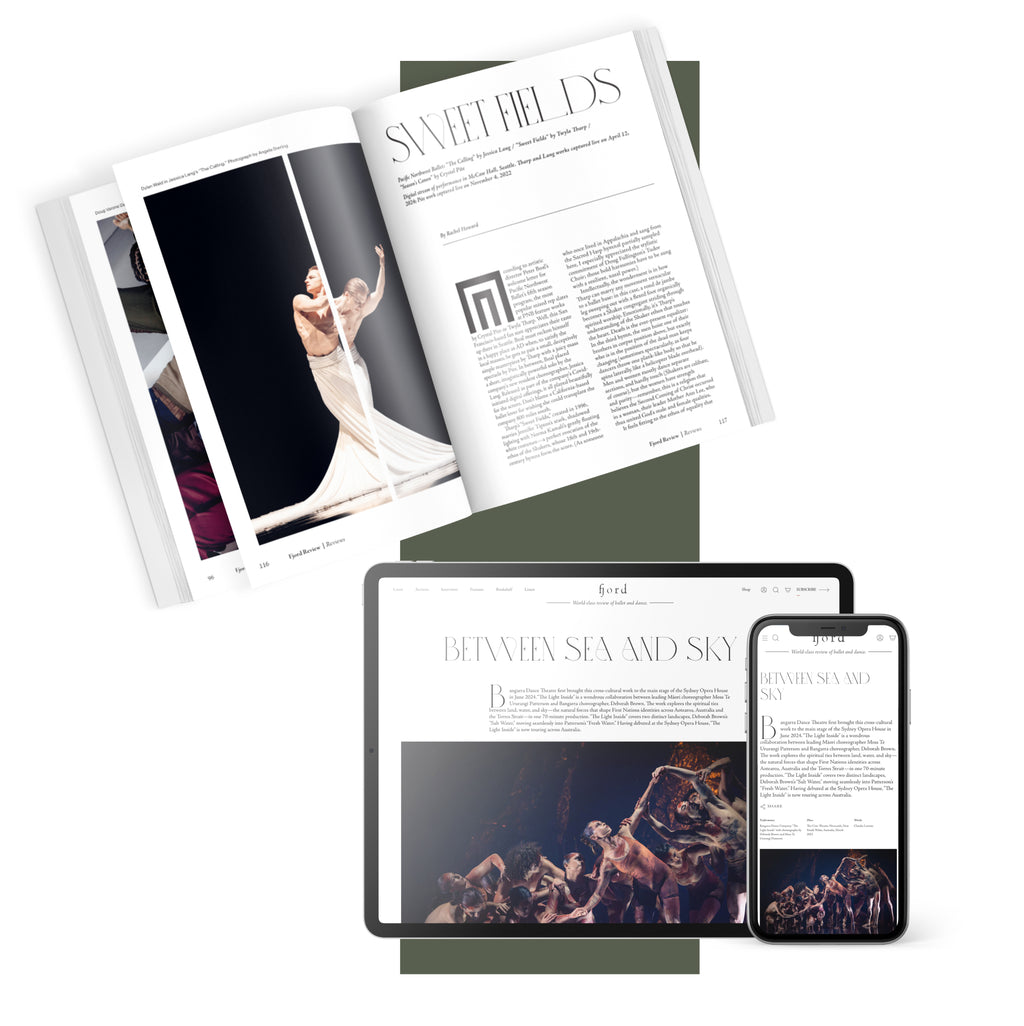Mishima’s Muse
Japan Society’s Yukio Mishima centennial series culminated with “Mishima’s Muse – Noh Theater,” which was actually three programs of traditional noh works that Japanese author Yukio Mishima adapted into modern plays.
Continue Reading
World-class review of ballet and dance.
An apron-clad Marjani Forté-Saunders, spotlit on the steps of the St. Mark’s Church sanctuary, rocks from one bare foot to the other while swinging a brown paper bag, presumably filled with groceries. She makes her way to a simple wooden kitchen chair, sets down the bag, takes a seat, and begins miming an animated conversation, her face wildly expressive. She cups a hand at her mouth as if whispering into someone’s ear, then turns it the other way, now on the receiving end. With a great arcing swoop of arm, she threads an invisible needle and begins mending. Her fingers grab at the air as if beaks of baby birds while a narrator in voiceover describes a kitchen scene of women gathered around a white enamel kitchen table: “all summer they drank iced coffee with milk in it … endlessly talking about childhood friends, operations, and abortions, deaths, and money.”
Performance
Place
Words



“Uncommonly intelligent, substantial coverage.”
Your weekly source for world-class dance reviews, interviews, articles, and more.
Already a paid subscriber? Login

Japan Society’s Yukio Mishima centennial series culminated with “Mishima’s Muse – Noh Theater,” which was actually three programs of traditional noh works that Japanese author Yukio Mishima adapted into modern plays.
Continue ReadingThroughout the year, our critics attend hundreds of dance performances, whether onsite, outdoors, or on the proscenium stage, around the world.
Continue ReadingOn December 11th, the Alvin Ailey American Dance Theater presented two premieres and two dances that had premiered just a week prior.
Continue ReadingThe “Contrastes” evening is one of the Paris Opéra Ballet’s increasingly frequent ventures into non-classical choreographic territory.
Continue Reading
comments